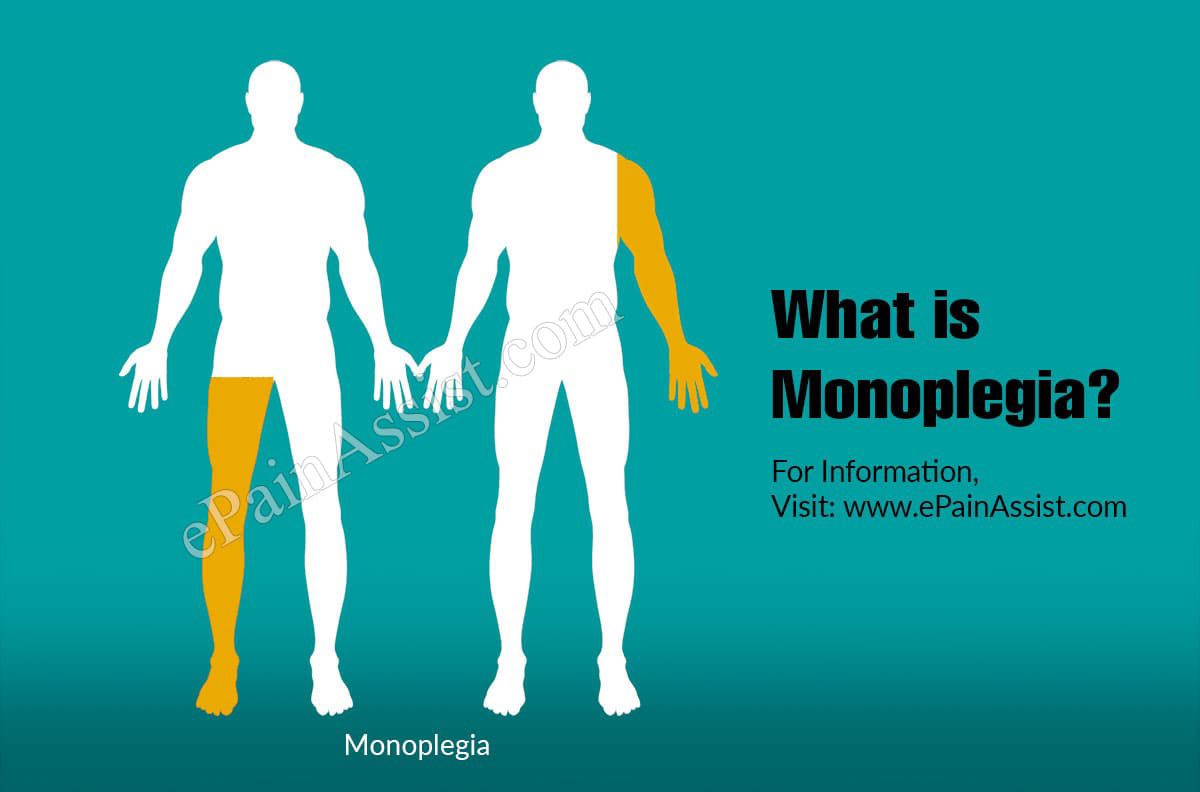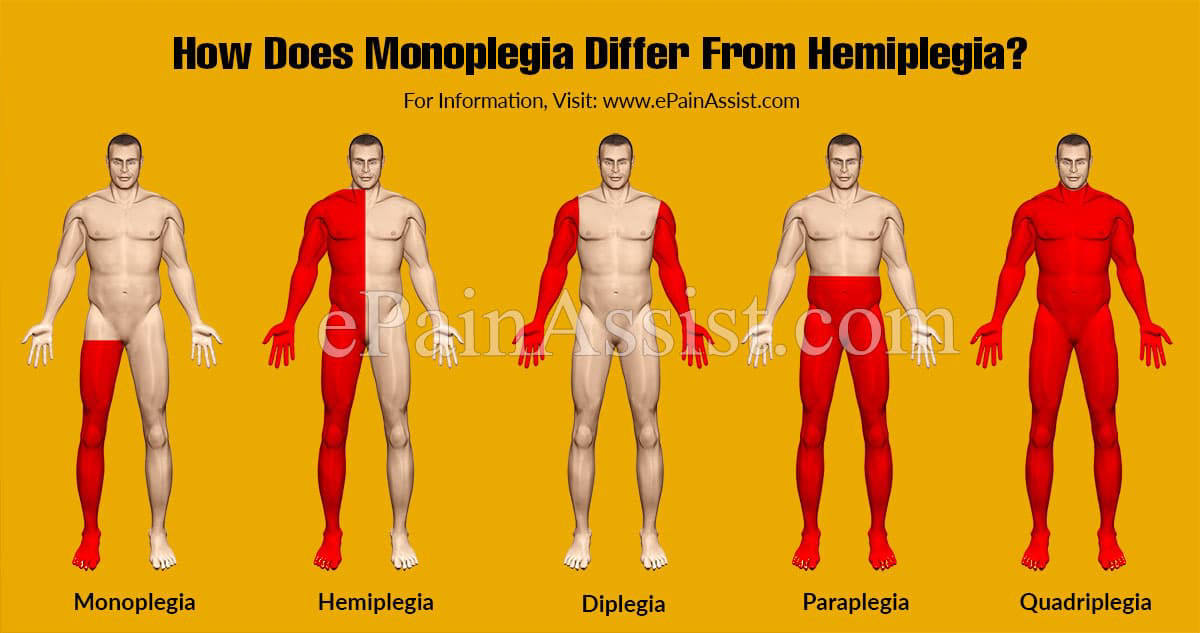What is Monoplegia?
Monoplegia is a type of paralysis that affects one limb. Mostly in monoplegia, one arm is affected but it can also affect one leg. The condition is temporary but in some can be permanent.
Damage to a part of the nervous system disrupts the functioning of a muscle or a group of muscles. This can cause muscle weakness or paralysis of the affected area.
The age of onset of monoplegia is 1-11 years and the male-to-female ratio is 7:4. The arms involved are twice as often as a leg.(1)

Causes of Monoplegia
The most common cause of monoplegia is cerebral palsy.(2) It can also occur due to injury to the brain and spinal cord.
Other Causes Of Monoplegia Include:
- Stroke
- Tumor affecting the brain and spinal cord
- Any autoimmune neurological disease such as multiple sclerosis
- Peripheral neuropathy
- Nerve inflammation
- Infection of the brain and spinal cord
- Strokes and aneurysms
- Peripheral nerve compression can occur due to bone spur, herniation, and tumor.
Symptoms of Monoplegia
Monoplegia limits a person’s daily activities. The symptoms of monoplegia come suddenly when it is due to stroke or injury. The symptoms then progress over time. The major symptom of monoplegia is the inability to move the arm or the leg.
Other symptoms are:
- Muscle stiffness
- A decrease in sensation in a single limb. There is also a sensation of pins and needles or unexplained pain.
- Loss of muscle tone
- Numbness and tingling sensation
- Muscle floppiness
- Difficult in moving the limb, finally resulting in the full loss of sensation
- Curling of fingers or toes of the affected limb

How Does Monoplegia Differ From Hemiplegia?
Monoplegia and hemiplegia both are types of paralysis.
Monoplegia affects a single limb while hemiplegia affects one side of the body. In monoplegia, only the affected limb does not move while in hemiplegia the whole affected side’s movement becomes difficult. This means hemiplegia of right side leads to restricted movement of the right arm as well as leg. The right side of the face would also get affected.
While both conditions differ the potential cause remains the same i.e. injury, cerebral palsy, and stroke.
Treatment Options For Monoplegia
The main motive of the treatment is to address the symptoms and improve the quality of life for those suffering from any type paralysis.
Treatment of the underlying cause of monoplegia is important. If monoplegia is due to infection of the brain or spinal cord, high doses of antibiotics improve the symptoms.
Some main treatment options include.
Physical Therapy
Physical therapy can help in building strength, flexibility, and mobility of the affected limb. The stretches, exercise, and massage done during the therapy help in stimulating muscles and nerves and thereby improving the chances of recovery.
Occupational Therapy
Different techniques are taught in occupational therapy which makes every day tasks such as dressing, bathing, or cooking easy.
Assistive Device
There are devices such as wheelchair, walkers, specialized grips and handles, and also voice-activated devices, that can make day-to-day activities easier.
These assistive devices can help an individual with monoplegia overcome the hurdles of each day.
Medications
There are certain medications that help reduce the symptoms associated with monoplegia. The medications include pain medications and muscle relaxants. They give relief from muscle stiffness and spasms.
Surgery
When the cause is due to tumor or nerve compression, surgery is recommended.
Monoplegia improves over time. But in some, it can be permanent. The treatment’s main focus is on alleviating the symptoms and improving the quality of life.
